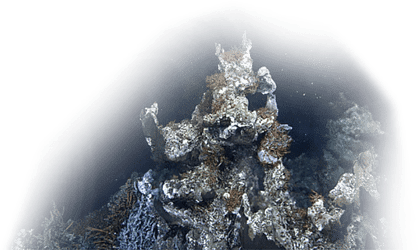Ocean Networks Canada’s (ONC) 4th annual Ocean Science Symposium brought together 55 students and 20 teachers from 16 schools across British Columbia. This fun interactive experience offered participants with an opportunity to discover the ocean through dynamic presentations and exciting hands-on experiences. Teens and teachers left with a new understanding of the mysteries of the deep, from sea ice and climate change, to ocean engineering and hydrothermal vents.
The University of Victoria campus provided a perfect location for the 4th annual Ocean Science Symposium, 29-30 April 2016.
The Ocean Science Symposium offers Grade 8-10 students and teachers with an opportunity to experience the interdisciplinary nature of ocean science and engineering. This year’s highlights included Sarika Cullis-Suzuki’s inspiring opening plenary speech, The Fish Eye Project’s live dive from Fiji and Earl Claxton Jr’s presentation about the importance of the ocean to the W̱SÁNEĆ peoples. Presentations by graduate students showcased their passion for oceanography and marine research, while offering insight into the diversity of ocean-related careers.
From L-R: University of Victoria Co-op student Ada Loewen; University of Victoria Masters student Lucianne Marshall; and ONC's Arctic Youth Science Ambassador Mia Otokiak share their knowledge and passion about arctic sea ice.
To demonstrate the ocean’s extremes, a variety of learning experiences focused on the dynamic ecosystems that thrive in both hot and cold ocean temperatures. Students learned how marine communities have adapted to live near hydrothermal vents, despite extreme heat, pure darkness and toxic gases. A variety of hands-on experiences helped students understand the zonation of species along the vents and the importance of larval dispersal.
Designing effective plankton for dispersal.
Unexpectedly, life also thrives in the frozen ocean. The formation of arctic sea ice is critically important to both marine and terrestrial species – from ice algae to polar bears. A fun exercise involving ice and food colouring revealed the brine channels that allow nutrients to flow through the frozen marine environment.
Investigating the structure of sea ice using food dye to demonstrate brine channels.
The crushing pressure of the deep ocean makes it necessary to use Remotely Operated Vehicles (ROV) for exploration and research. These specially designed vehicles dive as deep as 6000 meters, equipped with lights, cameras, sensors, and arms. The symposium provided participants with an opportunity to become ocean engineers during the ROV Challenge. Students and teachers alike spent the second day working in teams to build a neutrally buoyant ROV model.
Teachers and students worked in teams to build a neutrally buoyant ROV.
“Building an ROV with other teachers was a highlight for me.” Science teacher Brian Cameron traveled from Prince Rupert with two students from Charles Hays Secondary School. “It allowed me to understand some of the difficulties with creating submersible equipment, and it also helped me to understand why students were having difficulties accomplishing the task effectively. Too often teachers assume that things will work fine, but don’t test them out themselves to find out where difficulties will lie when students attempt the lesson planned.”
Teachers were encouraged to network with each other and brainstorm ways to incorporate more ocean science, data and engineering into their classes. Through the use of ONC’s Ocean Sense program along with real time data and video flowing from ocean observatories, students now have the ability to explore the ocean from the comfort of the classroom!
“Since the symposium, I have been actively using ONC video feeds, data and resources in my classroom daily, to inspire and inform my students,” says Brian Cameron. “I have recommended the symposium to other science teacher colleagues and they are looking forward to possibly attending in the future!”
Stay tuned for next year’s Ocean Science Symposium!
